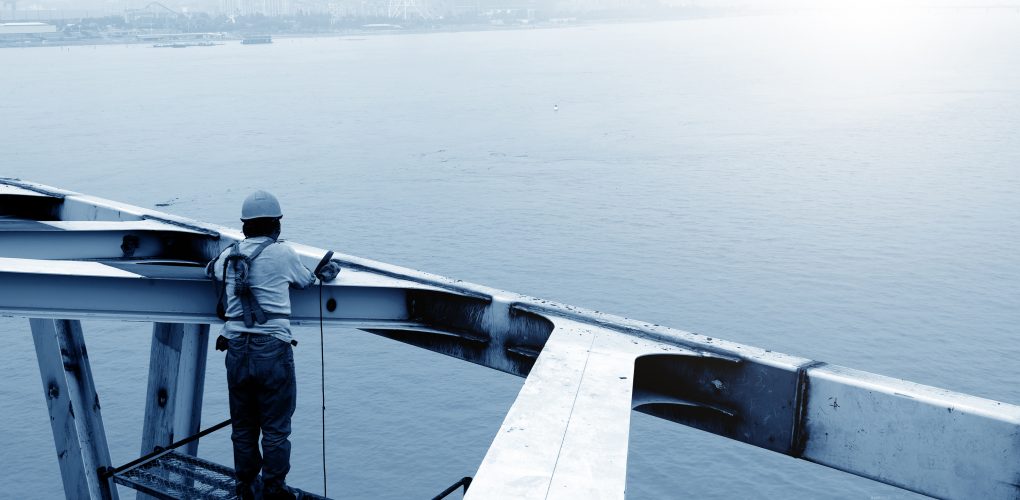Inspecting and maintaining bridges and the structures related to them is big business. It can also be a relatively dangerous field to work in, unless steps are taken to protect workers on job sites.
Currently, more than 600,000 bridges across the United States are required to be monitored, inspected, and maintained on an ongoing basis. More and more inspections need to be conducted as time goes by because many bridges are deteriorating quickly and dramatically. Government spending on upgrades and the replacement of antiquated structures has been inadequate for decades. Despite the limited budget dollars currently available, bridge inspection and maintenance projects provide steady employment for people working at countless private contractors and government agencies.
With all this activity also comes risk. According to the Bureau of Labor Statistics, there are, on average, more than 120 fatal injuries on bridge and road work sites every year.
Bridge inspections are overseen by the United States Department of Transportation’s Federal Highway Administration. The organization takes its mission seriously because the people working for it believe that bridges are critical to the nation’s highway transportation network. They play vital roles in supporting commerce, economic vitality, and the ability for people to get around.
According to experts at the agency, every single day, almost 4 billion vehicles cross bridges in the United States. These officials understand that people expect the viaducts that they cross to be safe.
The inspection of bridges became a top priority when the safety of them came into question on December 15, 1967. That’s the day that the Silver Bridge spanning the Ohio River between West Virginia and Ohio collapsed during rush-hour, when traffic was especially heavy. The incident resulted in 46 deaths and many injuries.
Following the collapse, new programs were created that required regular safety inspections of bridges and associated structures. The most important ones include the National Bridge Inspection Program and the associated Highway Bridge Replacement and Rehabilitation Program.
Agencies are required to inspect and collect data on the condition of all the critical structural components of bridges, including:
- The bridge deck.
- The superstructure, including all primary load-carrying members and connections.
- The substructure, including the abutments and piers.
- Culverts, if they’re a part of the design.
- Channels and channel protective systems for all bridges that cross waterways.
Needless to say, it can be challenging to reach many of these areas, especially those that are high above and underneath bridge decks. Safety is one of the top concerns for people and companies doing bridge inspections and maintenance activities. This includes protecting the people on inspection crews, maintenance workers, commuters and pedestrians, and the integrity of the structure itself.
One of the most important aspects of staying safe when carrying out bridge inspections is to always be intentionally aware. That means constantly maintaining focus on abiding by safety standards, laws, and regulatory requirements, with no exceptions.
It also means being intentionally aware of what’s happening around you every minute of every day you’re inspecting a bridge or working near a construction site and being prepared to properly respond or react to anything that occurs instantly.
Does it seem like an impossible goal to always be intentionally aware? You may find it difficult to maintain this level of vigilance, but it’s necessary. The truth is that most of the accidents that happen on bridge inspection and work sites are the results of human error. At the very least, it’s a contributing factor, along with other elements, in virtually every incident.
Intentional awareness not only makes sense from a human safety perspective, but it also makes financial sense. When an inspection or work is delayed because of an incident, costs are incurred that impact bottom-line profitability. If the accidents are serious enough, they can increase insurance and other costs on current and future projects.
Before people can be intentionally aware, they need to understand how to handle every situation that they could face. That’s why it’s essential to ensure that everyone is offered — and takes advantage of — required safety training, as recommended by the United States Occupational Health and Safety Administration, state and local agencies, and industry groups.
It’s also critical for workers to be trained on the proper use of all their equipment. Complex items, such as lift systems, should be supplied by reputable companies, like BridgeMasters, and everyone must be trained on their proper set up and use and how to take advantage of all their enhanced safety features.
Got questions about bridge inspection and maintenance safety? BridgeMasters has been keeping people safe on sites for a long time. Contact our experts to learn how.

